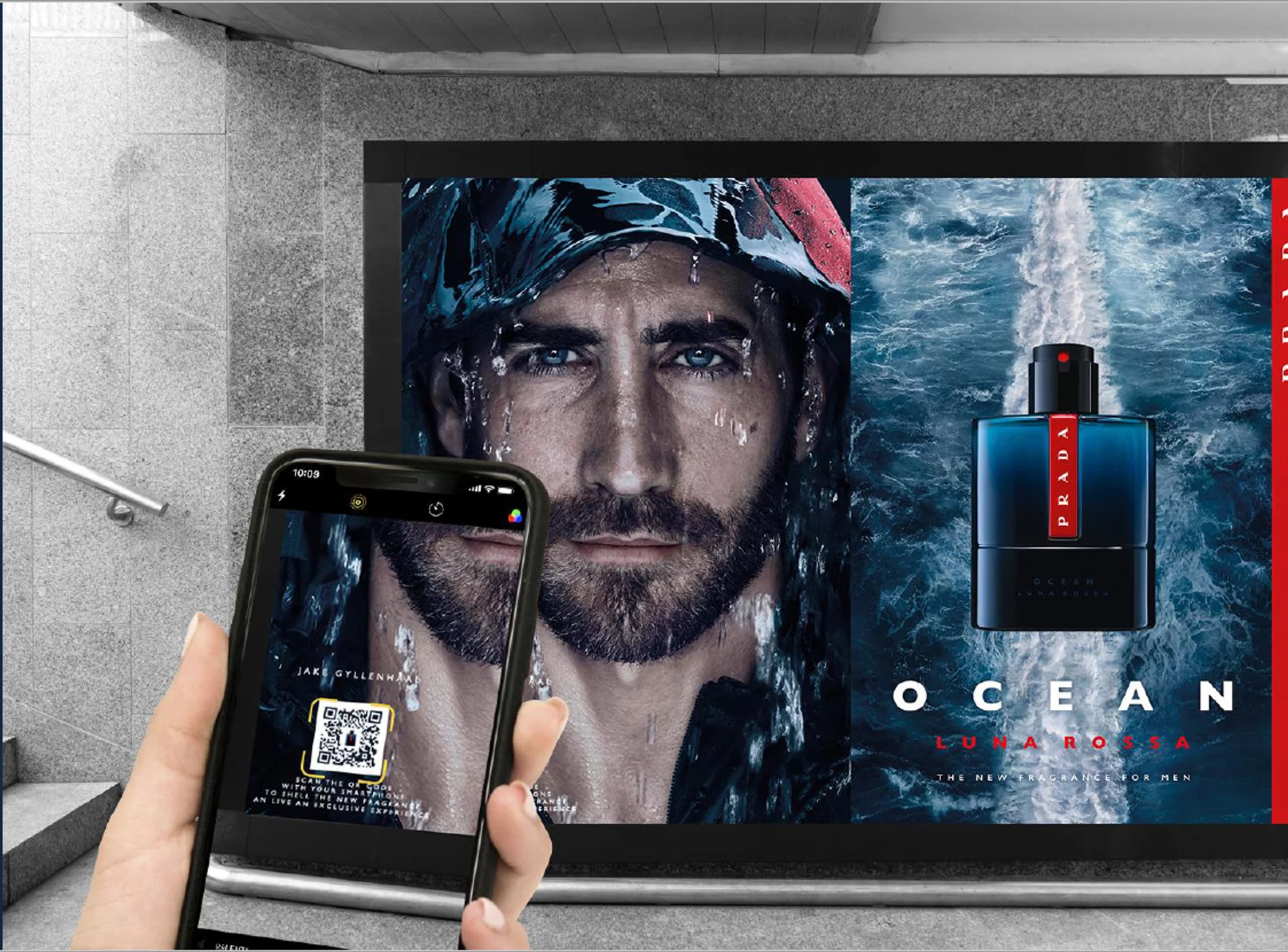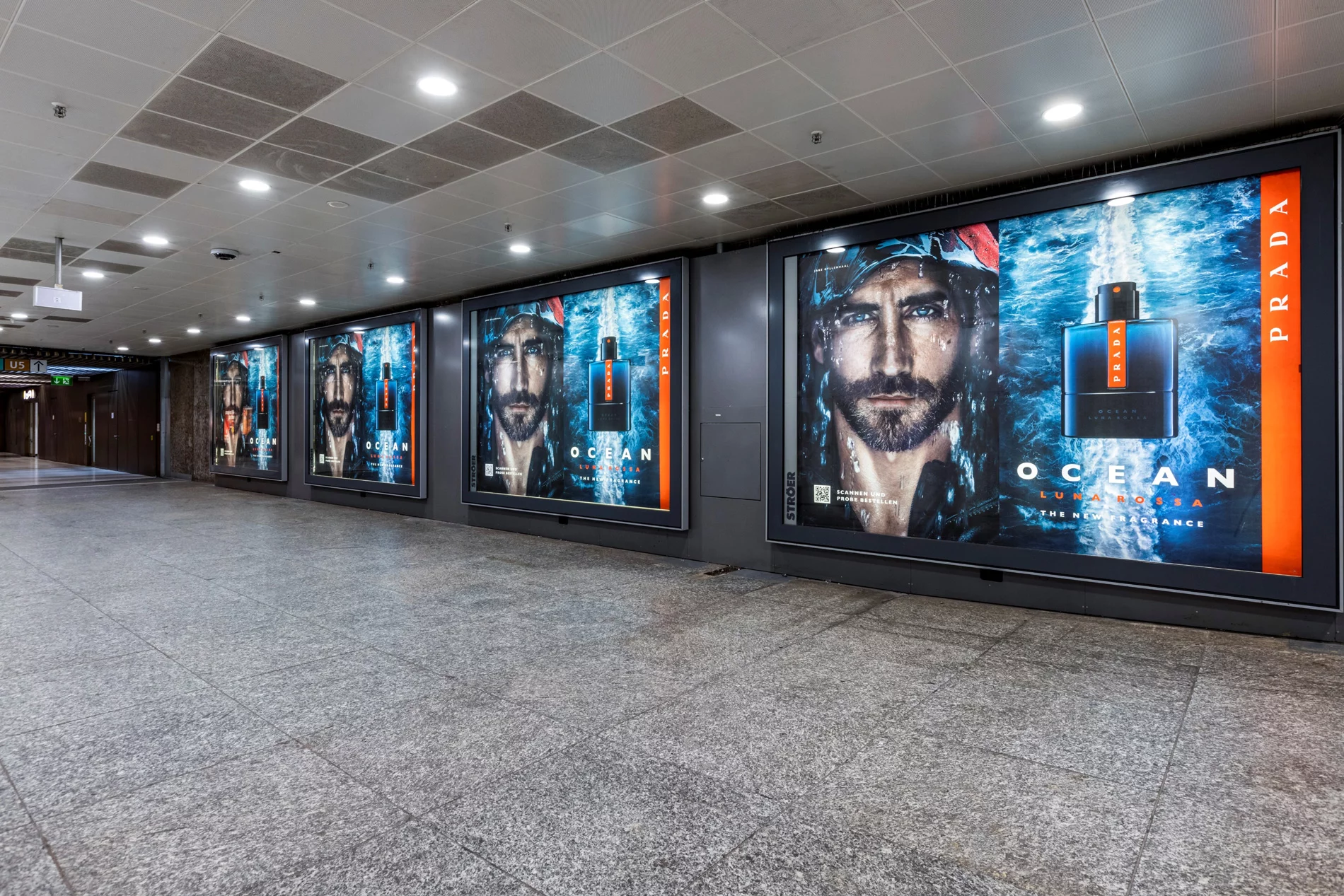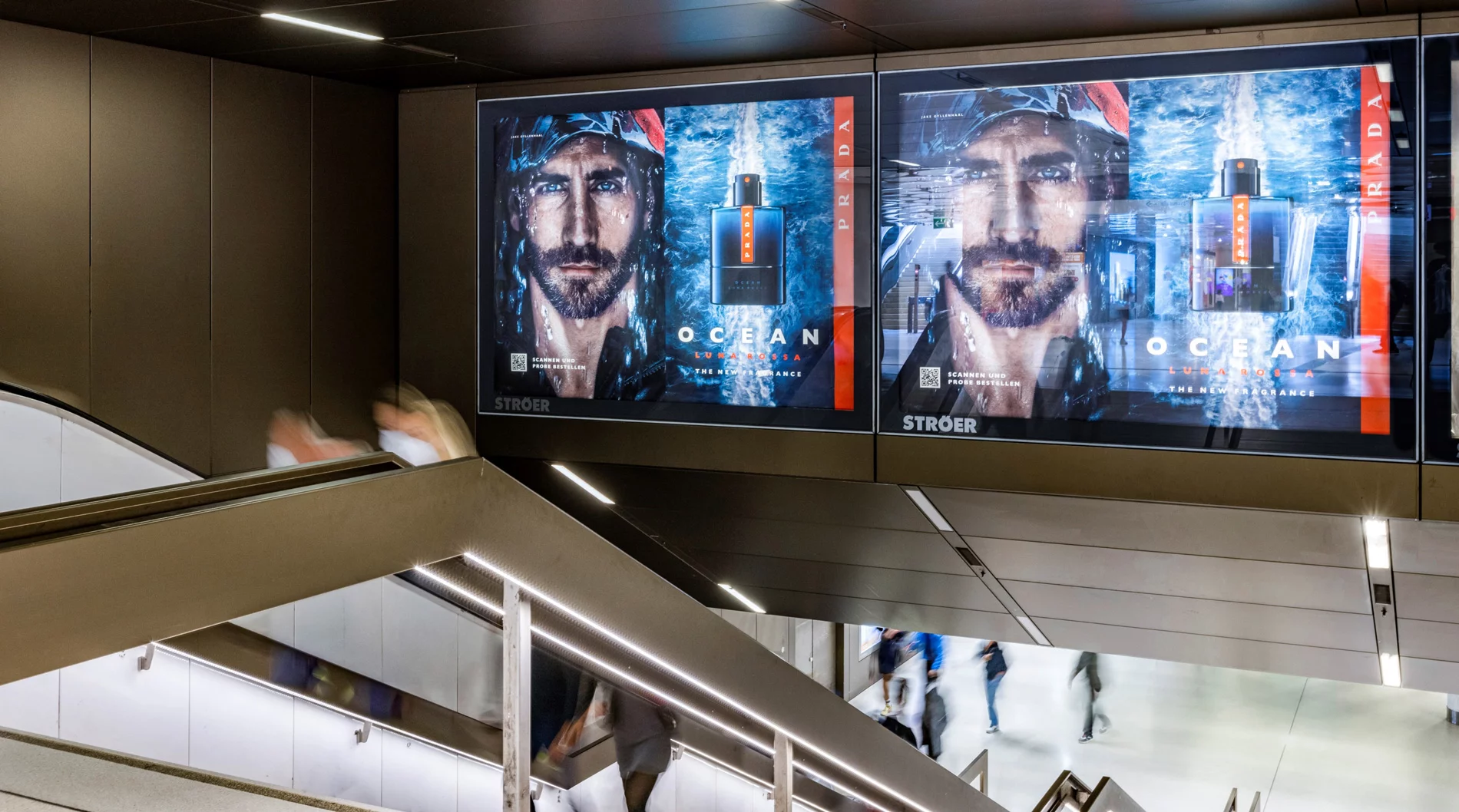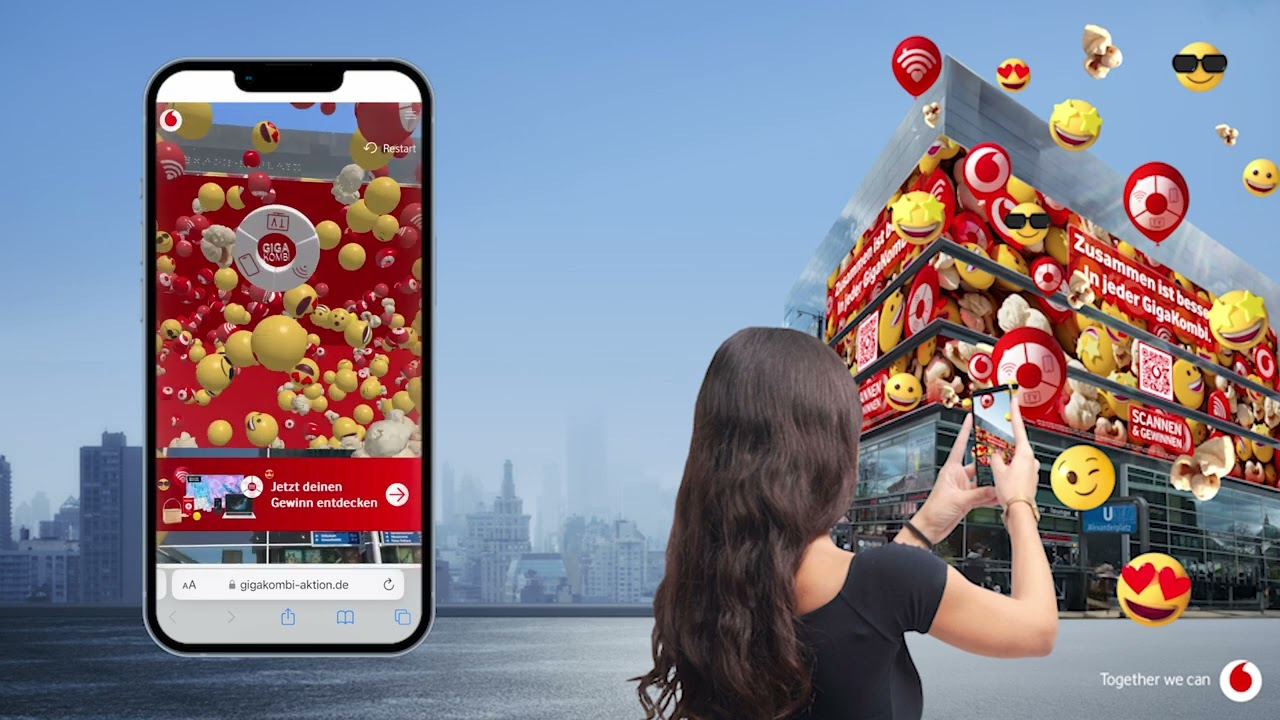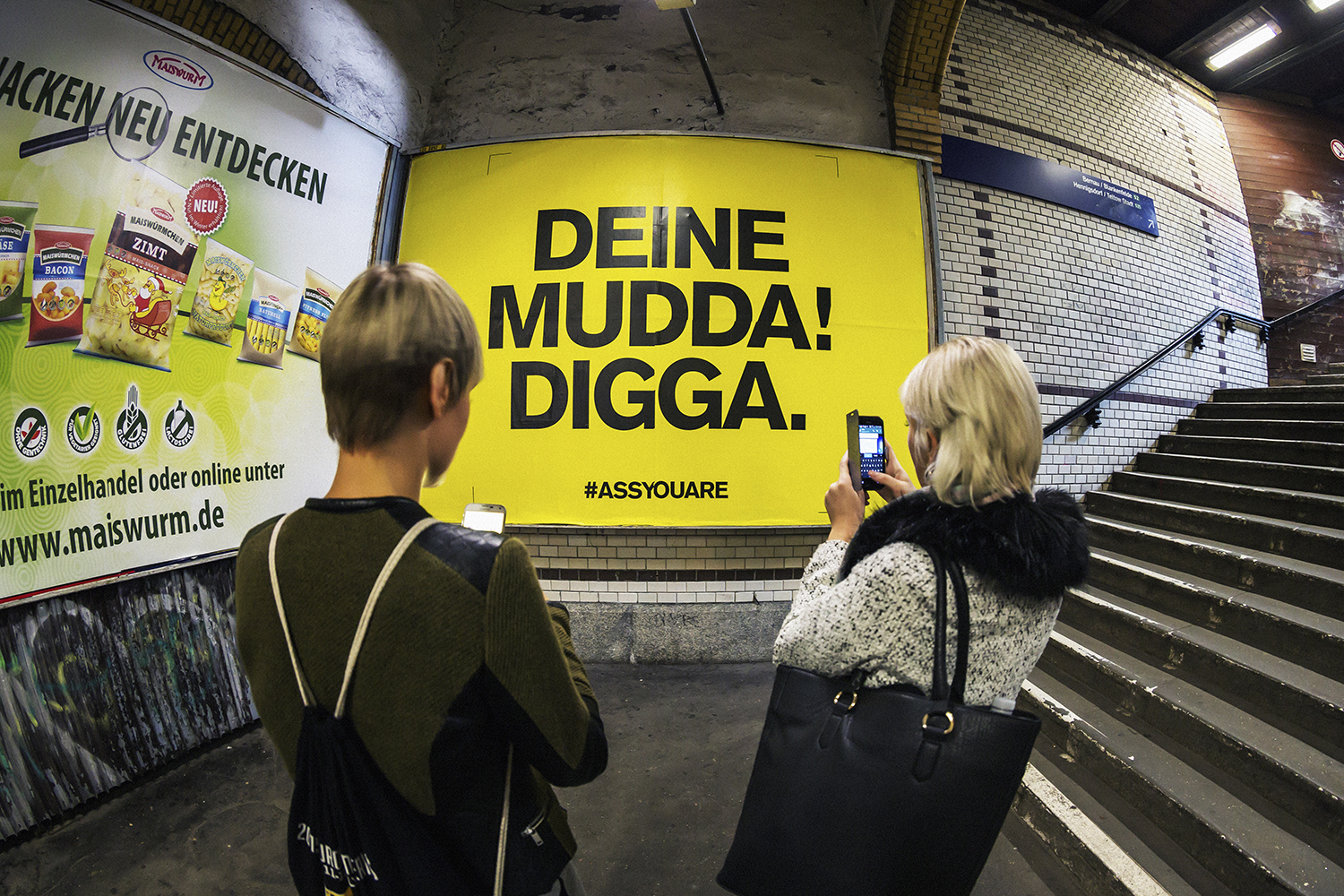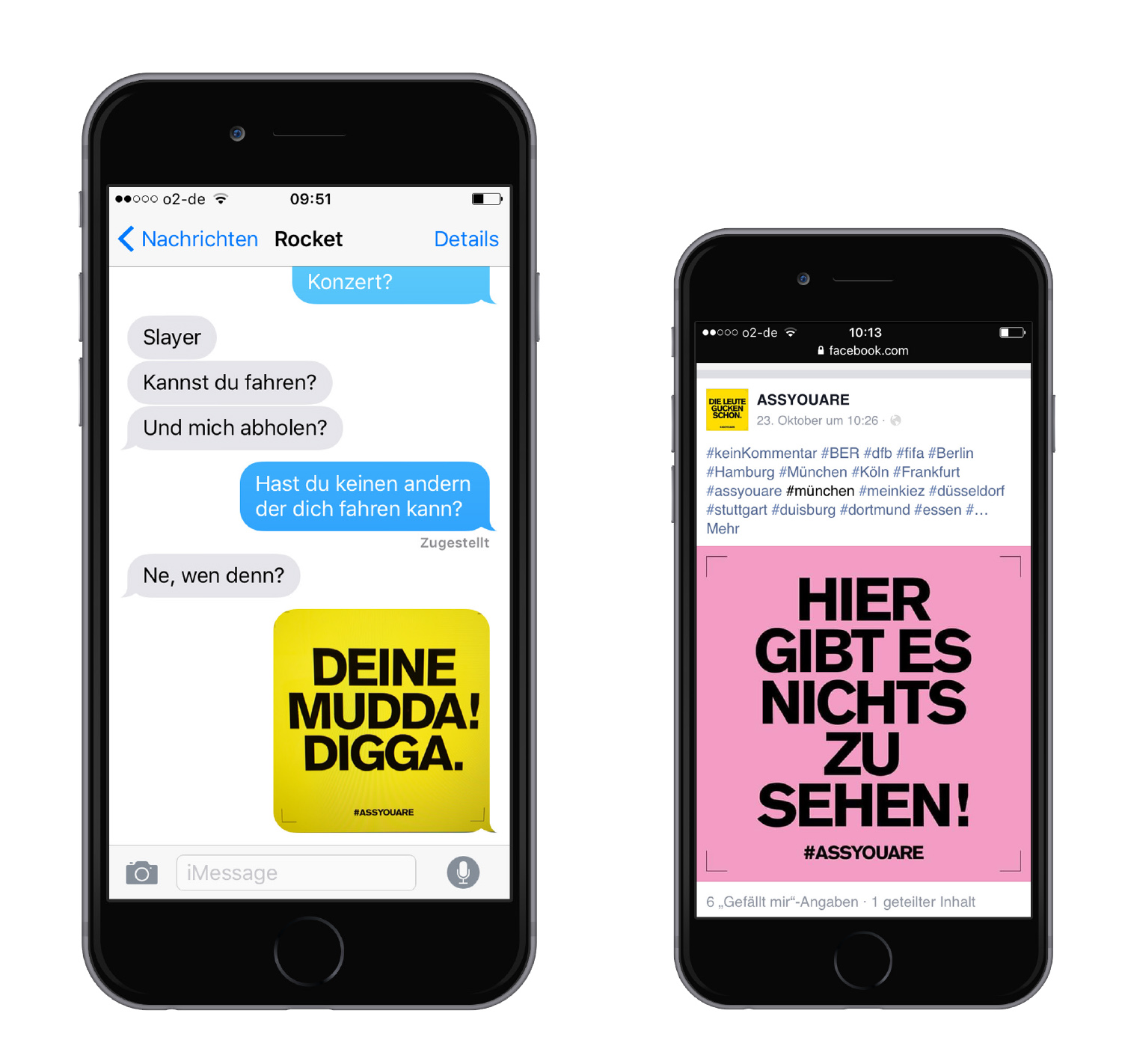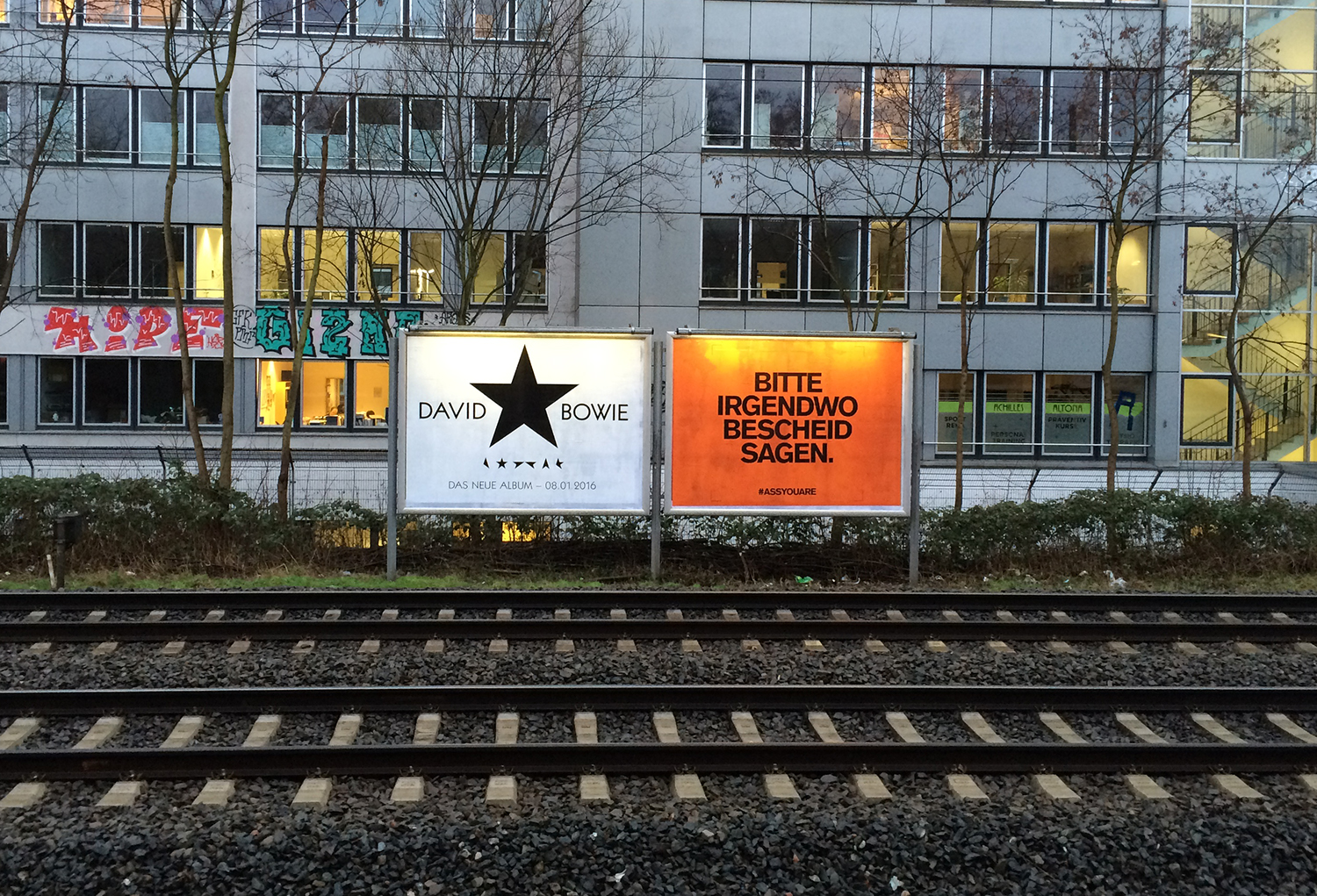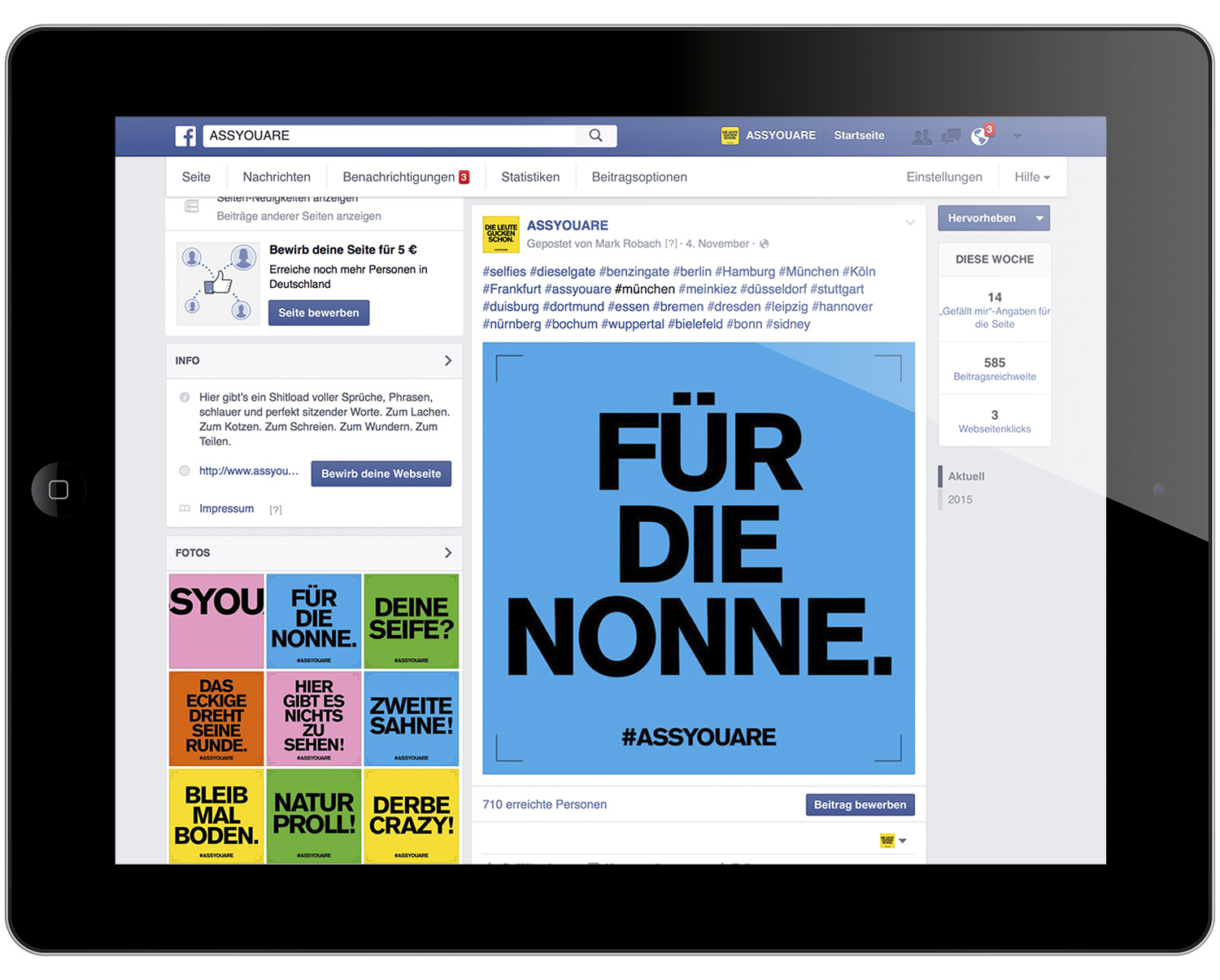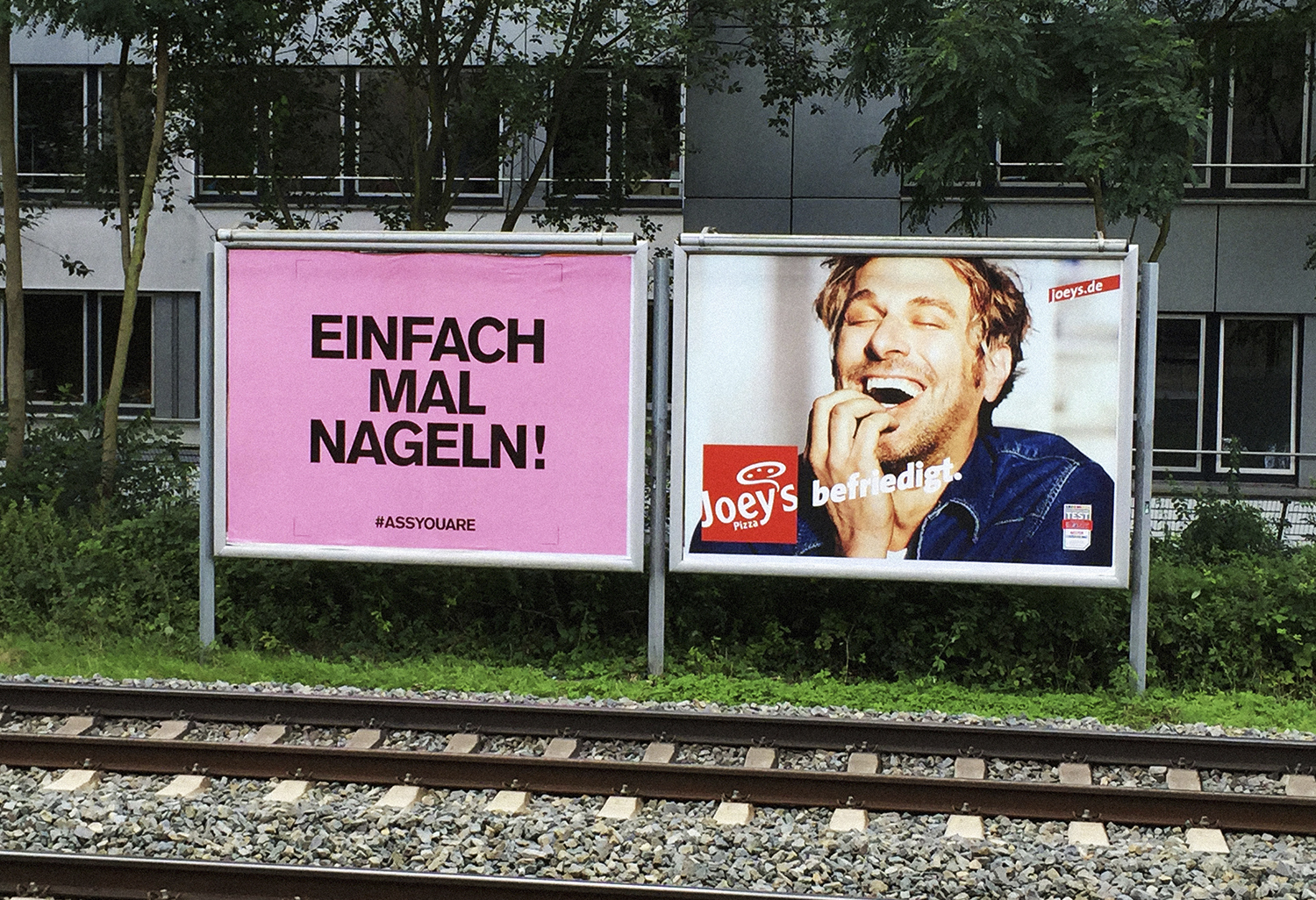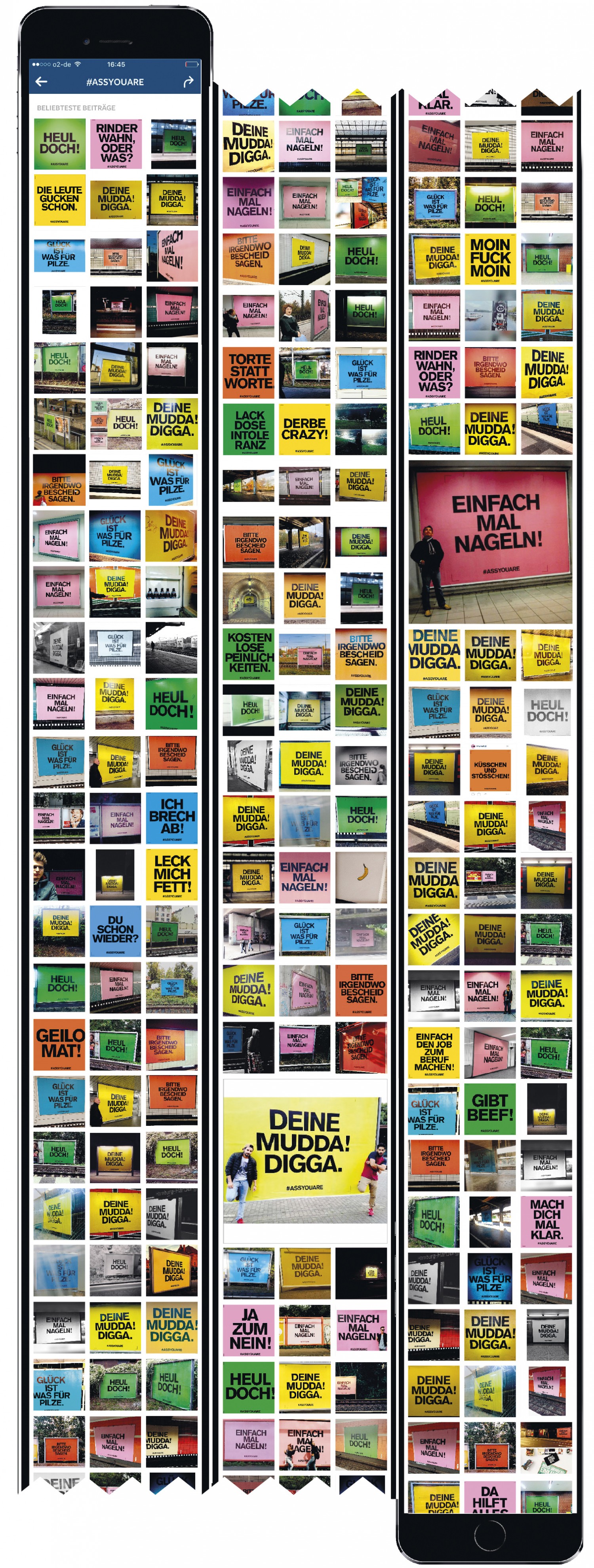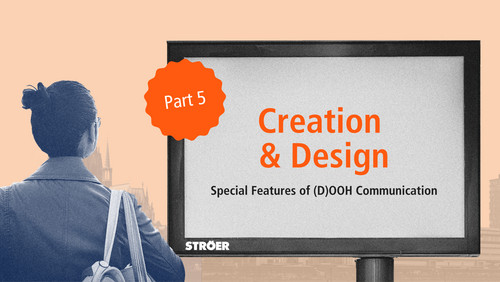
21. November 2024
Make it interactive: Three ways to a strong (D)OOH presence
In our daily lives, we encounter outdoor advertising in different ways and in different forms: Whether large, imposing, digital or analogue. But how do you manage to attract the full attention of the target group in an average of two seconds of viewing time and convey a message that will be remembered? This entails special rules and design tips.
The author of this article, Jörg Huhn, shows us how marketers can actively involve target groups in the brand experience in their campaigns.
The world of outdoor advertising has undergone an impressive transformation in recent years. What were once simple, static posters have evolved into a dynamic, interactive medium that enables brands to communicate creatively and purposefully with their target audiences. This change has been made possible by rapid advances in technology and digitalisation, which are increasingly blurring the boundaries between traditional and digital advertising.
In today's fast-moving and information-flooded world, consumers no longer expect mere advertising messages, but personalised experiences that address them directly and actively involve them. Out-of-home (OOH) and digital out-of-home (DOOH) offer the ideal platforms for this: precise, location-based targeting in public spaces – around the clock.
“Interactive outdoor advertising” utilises various technologies and creative approaches to establish a deeper connection with the audience. From QR codes that facilitate the transition to the digital world, to augmented reality that enhances reality, to the integration of social media that increases reach and engagement – the possibilities are many.
Consumers are no longer passive recipients of advertising messages, but are actively involved in the brand experience. This engagement not only ensures greater awareness, but also stronger brand loyalty, as consumers experience the brand in a completely new way.
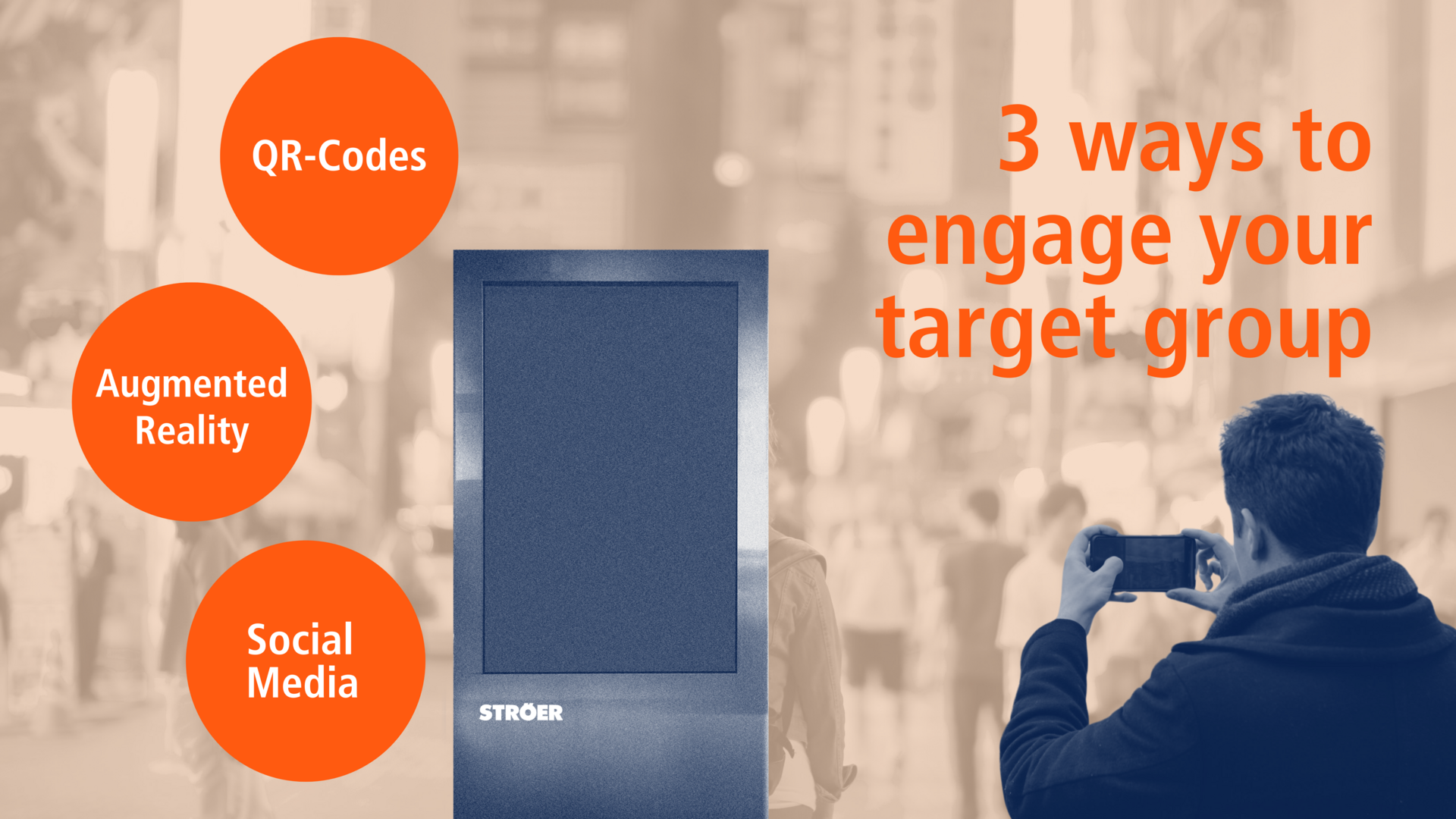
QR codes for (D)OOH: The bridge to the digital world
QR codes are a simple but effective way of making classic posters interactive. Users can scan the code with their smartphone and are taken directly to further information, competitions or special offers. This method is particularly popular as it requires no additional hardware and is easy to implement.
A good example of this is the Prada campaign to publicise the men's fragrance Luna Rossa Ocean. By scanning the QR codes, interested parties were able to call up more detailed information and easily order fragrance samples.
So-called “interactive extended QR codes” (iXQR codes) represent the next evolutionary stage of QR codes and offer extended functions and possibilities. From 2027, they will replace the EAN code known from the retail sector, among others, worldwide and are therefore likely to become the focus of advertising experts at the latest. iXQR codes are multidimensionally configurable and – this is new – can be dynamically linked to numerous digital services and content at any time. Thanks to their diverse design options, they can also become an important part of brand communication. For example, they can be designed in the corporate design and are therefore ideal for integration into (D)OOH campaigns.
Design tips
- Visibility. The QR code should be clearly visible and easily accessible, ideally at eye level.
- Call to action. A clear call to action such as ‘Scan now!’ or ‘Discover more!’ helps to increase the interaction rate.
- Design. The QR code should be harmoniously integrated into the poster design, with colours offering a high contrast to facilitate the scanning process and at the same time fit in with the overall image.
- User-friendliness. Care should be taken to ensure that the QR code is easy to scan and leads users quickly to the desired content.
- Measurability. The use of QR codes that can track user behaviour provides valuable data on the effectiveness of the campaign.
(D)OOH & Augmented Reality (AR): Extending reality
AR technology makes it possible to integrate digital content into the real world. Users can point their smartphone at a poster and see enhanced content such as 3D models, videos or animations. This immersive experience creates a deeper connection to the brand and is remembered for longer.
The Vodafone GigaKombi campaign is a good example of how OOH and AR can be successfully combined. The combination of AR technology with OOH media not only attracted attention, but also led to deep and lasting brand loyalty. After a simple activation via QR code, users saw emojis, balloons and a three-dimensional wheel depicting various GigaKombi options in their real environment. The campaign was supplemented by a daily competition in which main prizes such as smartphones and televisions as well as 11,000 instant prizes were raffled off, which could be collected directly from Vodafone shops.
Design tips
- Simple and clear instructions. It must be clearly communicated how the AR effects can be triggered to ensure maximum participation.
- Call to action. AR content should be designed to capture users' attention and encourage interaction.
- Compatibility. The AR experience should be optimised for all types of smartphones and operating systems to reach a broad target group.
- Immersion. The AR content should be harmoniously embedded in the real environment to create an immersive and credible experience.
- Measurability. The campaign should provide ways to measure interaction and engagement to evaluate success and optimise future campaigns.
Social media integration: increasing the reach of (D)OOH
By integrating social media elements such as hashtags or links, users can be encouraged to share and comment on content. This not only increases the reach of the campaign, but also encourages interaction and engagement from the target group.
A good example of this is the #assyouare campaign by ASS Werbe GmbH in collaboration with the agency Rocket & Wink: ASS is responsible for booking billboards and wanted to demonstrate that OOH campaigns can achieve viral reach without extensive PR measures and high advertising pressure. The motto of the campaign was “Relevant slogans for the people” – no advertising message, no call to action, just a hashtag was displayed under the slogans. The campaign met with a positive response and was actively shared on social media.
Design tips
- Visibility. Hashtags or links should be clearly visible. Ideally, they should even be integrated into the headline/text.
- Call to action. A clear call to action such as “Share your experience with #campaignname!” motivates interaction.
- User-friendly content. Content should be designed to be easy to share and comment on to encourage interaction.
- Cross-platform optimisation. Integration should be optimised for all popular social networks and devices to reach a wide audience. Real-time updates and dynamic content also increase appeal.
- Measurability. The campaign should offer ways to measure interaction and engagement. Tracking tools can be used to collect valuable data on effectiveness and optimise future campaigns.
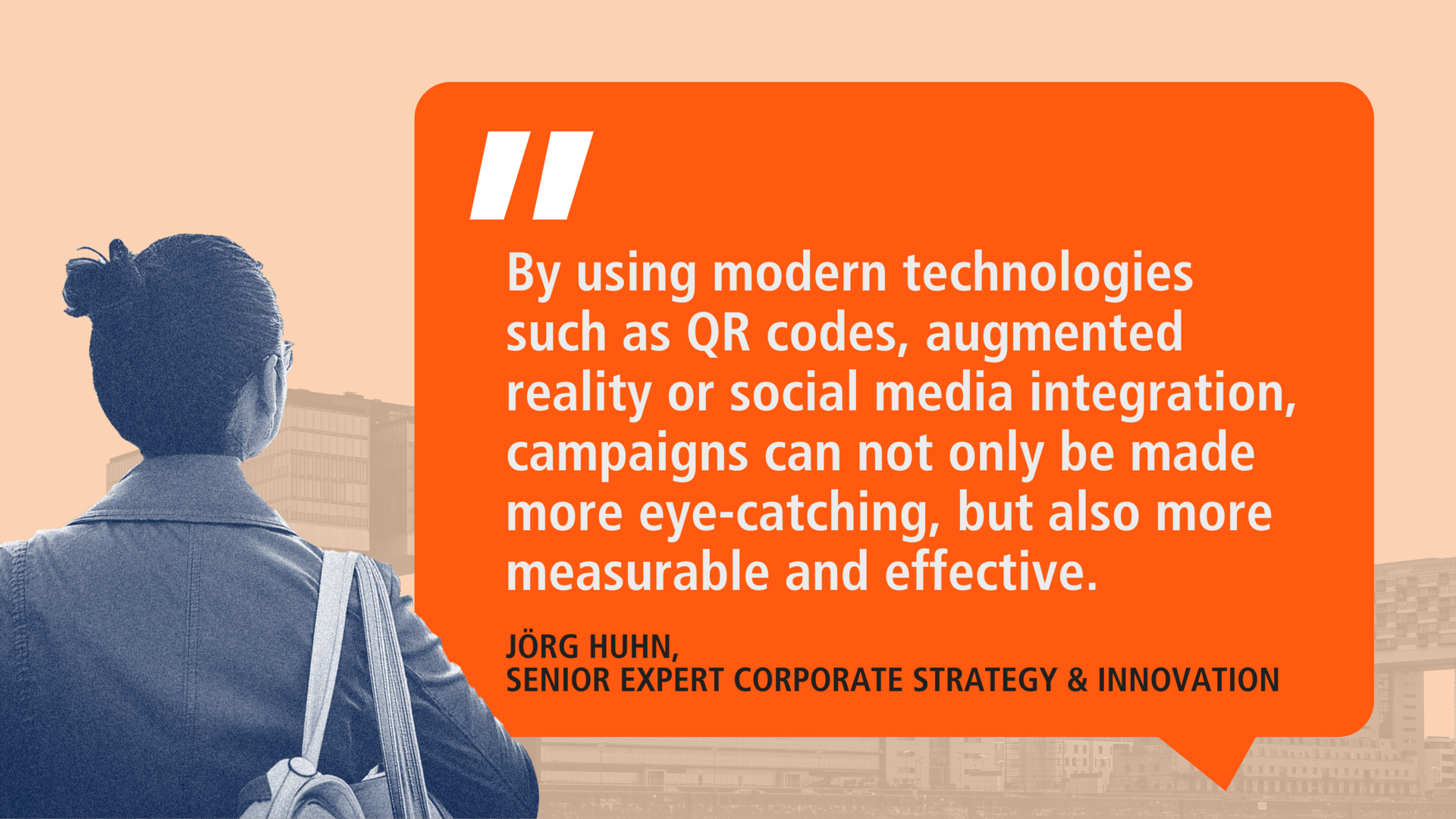
Conclusion: Let's make it interactive!
The combination of traditional and digital interaction options opens up new ways for advertisers to reach and inspire their target groups. By using modern technologies such as QR codes, augmented reality or social media integration, campaigns can not only be made more eye-catching, but also more measurable and effective.
And already inspired for your next D(OOH) campaign? In the coming months, our multi-part blog series will present the most important elements of (D)OOH creation, show various possibilities for interaction and inspire you with innovative and technology-linked examples of success. Stay tuned!
Media content in this blog post was created with the help of AI.
Text
- https://www.stroeer.de/cases/prada-interaktive-kampagne-mit-qr-code/
- https://blog.stroeer.de/innovation/augmented-reality-advertising-grossformat-setzt-neue-massstaebe/
- https://www.rocketandwink.com/work/21421/assyouare-kampagne
Videos
Pictures
- https://www.stroeer.de/cases/prada-interaktive-kampagne-mit-qr-code/
- https://www.rocketandwink.com/work/21421/assyouare-kampagne
ChatGPT-4o mini was used as a supporting tool for the research and SEO optimisation of this blog post. The information generated was not adopted unchanged, but carefully checked and verified by our editorial team. The final text was written and checked entirely by humans.



